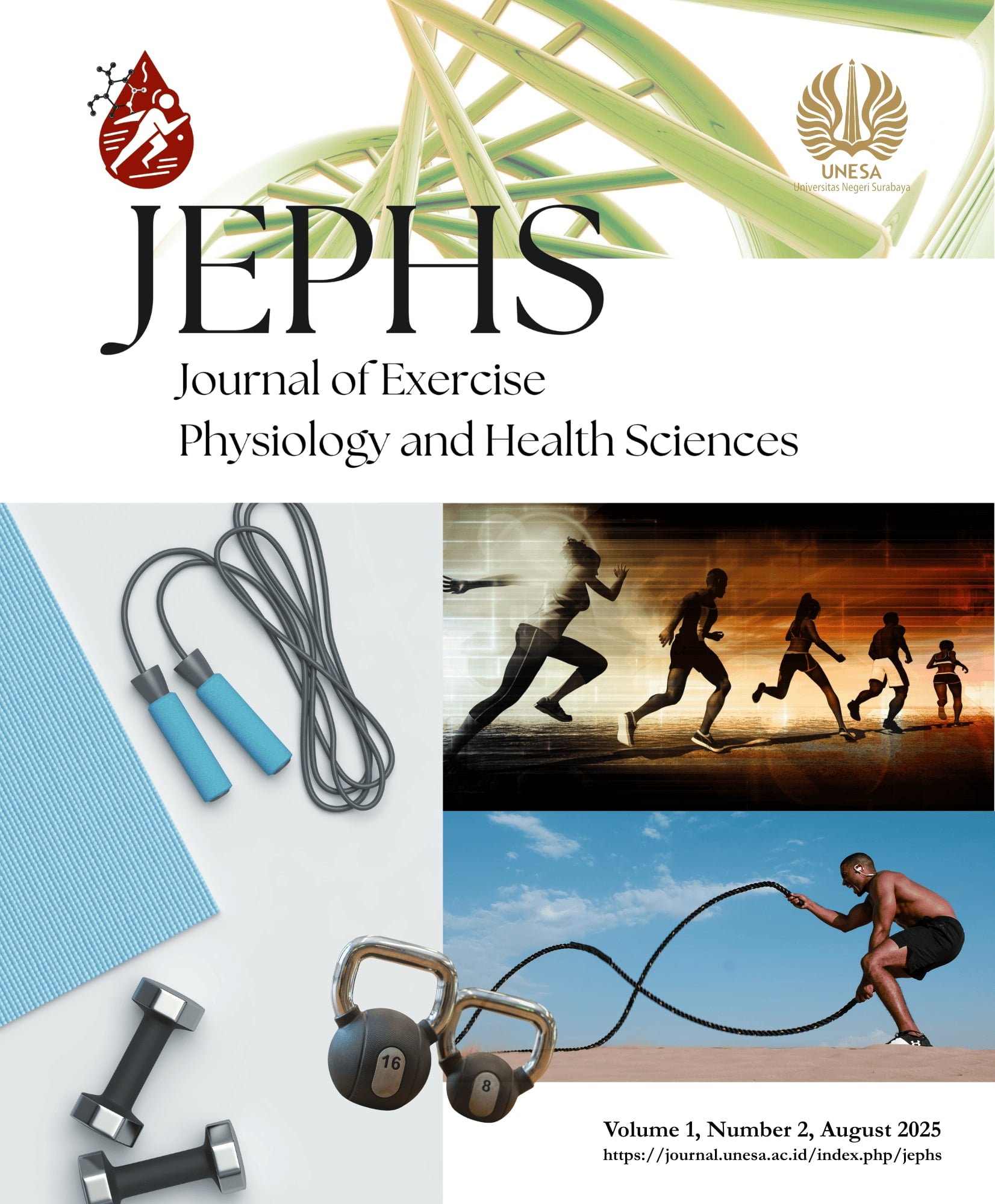Physiology In Sports Achievement: Literature Review
Keywords:
Exercise Physiology, Peak Achievement, Physical ActivityAbstract
This study discusses the role of exercise physiology in improving athlete achievement. Exercise physiology, as a branch of the science of physiology, studies the physiological changes that occur in the body during physical activity. This study uses literature review and quantitative methods, with data collection through questionnaires distributed to futsal and football athletes in Blitar Regency. The results of the analysis show that understanding the function of the body's organs and the changes that occur due to exercise can help in designing a more effective exercise program. Regular and planned physical exercise can improve the efficiency of heart work, vascular elasticity, lung capacity, and muscle and bone strength. This study emphasizes the importance of applying exercise principles that are in accordance with the physiological characteristics of individuals to achieve optimal results in sports performance. It is hoped that the results of this study can be a guideline for coaches and athletes in formulating better training programs based on a deep physiological understanding.
References
1. Li N, Yang Y, Zhao X, Li Y. The relationship between achievement motivation and college students’ general self-efficacy: A moderated mediation model. Front Psychol. 2023;13.
2. Dellsén F. Scientific progress: By-whom or for-whom? Stud Hist Philos Sci. 2023;97.
3. Gabriel BM, Zierath JR. The Limits of Exercise Physiology: From Performance to Health. Vol. 25, Cell Metabolism. 2017.
4. Pias SC. How does oxygen diffuse from capillaries to tissue mitochondria? Barriers and pathways. Vol. 599, Journal of Physiology. 2021.
5. Nystoriak MA, Bhatnagar A. Cardiovascular Effects and Benefits of Exercise. Vol. 5, Frontiers in Cardiovascular Medicine. 2018.
6. Chen H, Chen C, Spanos M, Li G, Lu R, Bei Y, et al. Exercise training maintains cardiovascular health: signaling pathways involved and potential therapeutics. Vol. 7, Signal Transduction and Targeted Therapy. 2022.
7. Chatzipanteli A, Adamakis M. Social Interaction Through Structured Play Activities and Games in Early Childhood. In 2022.
8. Hughes DC, Ellefsen S, Baar K. Adaptations to endurance and strength training. Vol. 8, Cold Spring Harbor Perspectives in Medicine. 2018.
9. Hegde SM, Solomon SD. Influence of Physical Activity on Hypertension and Cardiac Structure and Function. Vol. 17, Current Hypertension Reports. 2015.
10. Abraham A, Collins D. Effective skill development: how should athletes’ skills be developed? In: Performance Psychology: A Practitioner’s Guide. 2011.
11. Silverman MN, Deuster PA. Biological mechanisms underlying the role of physical fitness in health and resilience. Vol. 4, Interface Focus. 2014.
12. Eijsvogels TMH, George KP, Thompson PD. Cardiovascular benefits and risks across the physical activity continuum. Vol. 31, Current Opinion in Cardiology. 2016.
13. Plotkin DL, Roberts MD, Haun CT, Schoenfeld BJ. Muscle fiber type transitions with exercise training: Shifting perspectives. Vol. 9, Sports. 2021.
14. Baumann H, Jäggi M, Soland F, Howald H, Schaub MC. Exercise training induces transitions of myosin isoform subunits within histochemically typed human muscle fibres. Pflugers Arch. 1987;409(4–5).
15. Cerqueira É, Marinho DA, Neiva HP, Lourenço O. Inflammatory Effects of High and Moderate Intensity Exercise—A Systematic Review. Front Physiol. 2020;10.
16. Heinrich KM, Patel PM, O’Neal JL, Heinrich BS. High-intensity compared to moderate-intensity training for exercise initiation, enjoyment, adherence, and intentions: An intervention study. BMC Public Health. 2014;14(1).
17. Atakan MM, Li Y, Koşar ŞN, Turnagöl HH, Yan X. Evidence-based effects of high-intensity interval training on exercise capacity and health: A review with historical perspective. Vol. 18, International Journal of Environmental Research and Public Health. 2021.
 Abstract views: 127
,
Abstract views: 127
, PDF Downloads: 152
PDF Downloads: 152





